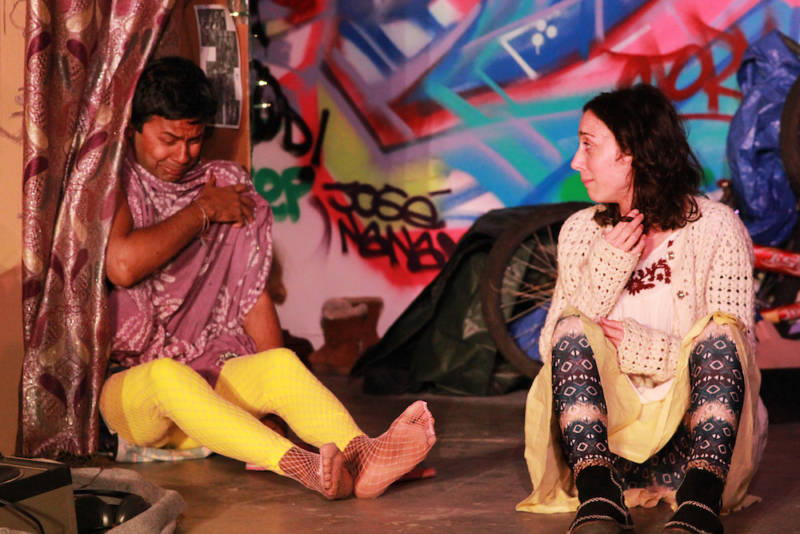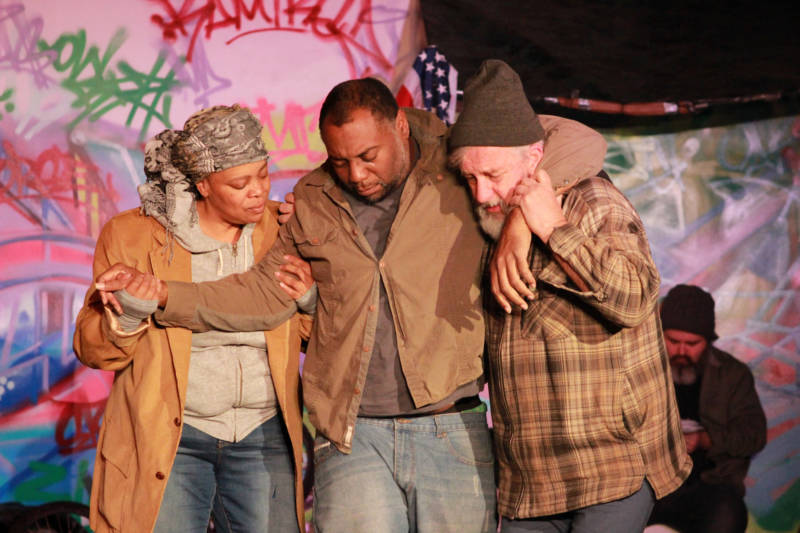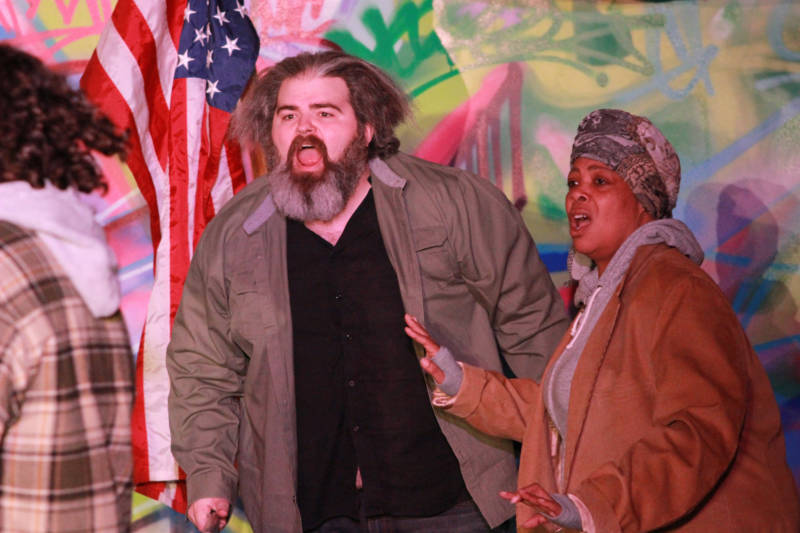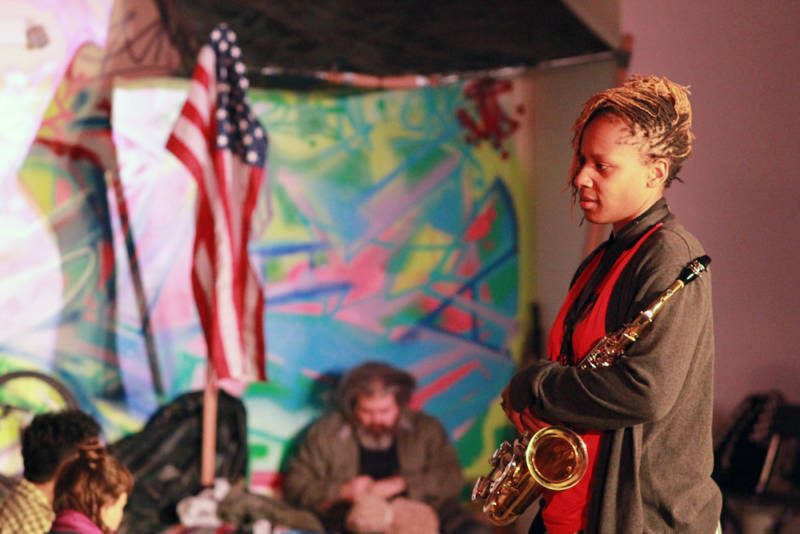For a show that didn’t have a confirmed venue until a couple weeks before opening night, it’s somewhat appropriate that the world-premiere production of Down Here Below, from Oakland’s Ubuntu Theater Project, is set in a homeless encampment.
In Ubuntu’s production, situated in the loading zone of the Oakland branch of FLAX artist supply store, the cast occupies an ephemeral camp called the “Village of Radical Acceptance.” It’s a bare-bones suggestion of a camp, really, created from a few tarps and chairs, scattered milk crates, a refrigerator box, and graffiti-covered walls.
By serendipitous coincidence, Ubuntu’s run of Down Here Below—an adaptation of Maxim Gorky’s The Lower Depths by Ubuntu associate artist, Lisa Ramirez—coincides with that of The Jungle, across the Bay at the Curran Theatre in San Francisco. Though The Jungle has a bigger budget, and therefore a more realized immersive experience, both productions put their audience in the same physical and psychological space as the characters.
Upon walking into FLAX, the audience must navigate a path through the waiting performers, who ask for spare change and sandwiches. Once seated, hunched around the playing area as if at a bonfire, the audience is pulled into the daily routines of the camp and its denizens without the artificial distance of a proscenium stage. We are all a part of the story.

That Down Here Below is a story without a beginning or an end only adds to its immersive quality. The inhabitants of the Village are already familiar with each other, and therefore have no need to painstakingly lay out their backstories—at least not until their backstories come looking for them.





